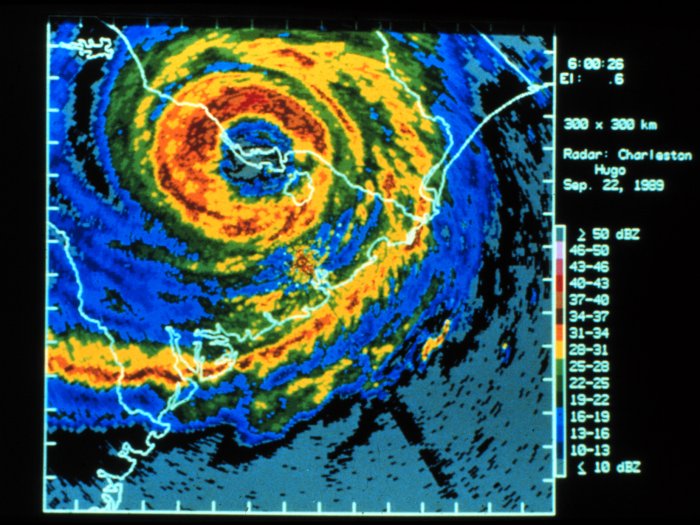
Home > Air pressure > Air Pressure and Weather
|
|||||
Where is the Pressure Coming From?
High pressure coming from the south will usually be warmer and high pressure coming from the north will usually be colder. Also, consider that "pressure" is relative to the surrounding atmosphere. There is no one pressure value that draws the line between high and low. High pressure is only high if the air masses surrounding it have a lower pressure.
Low Pressure and Bad Weather
Air warmed by the sun on the earth's surface can hold more moisture than cool air. As the warm moist air rises, it begins to cool. Eventually, the air can reach a level where it is too cool to continue to hold its moisture. At this point the moisture condenses out to become clouds. You may have noticed that rapidly falling pressure usually precedes stormy, cloudy and rainy weather.
High Pressure and Clear Weather
High pressure areas are produced by cooler, heavier, sinking air. This air contains less moisture and is more stable. The air in high pressure areas travels downward and away from the high pressure, causing many clouds to dissipate. In the summer, high pressure usually means sustained sunshine, few clouds, low winds, high temperatures, and dry weather. In winter, the lack of cloud cover can cause the temperatures to be very cold, since the lack of clouds allows heat from the earth to travel away from the earth.
Changing Pressure
The change in the pressure, and how fast it is changing, is more indicative of the weather than the pressure itself. Rapidly falling pressure almost always means an approaching storm system. Slow, sustained pressure drop predicts a sustained period of poor weather conditions. Rapidly rising pressure almost always means clearing and cooler weather is ahead, however it will not last as long as pressure that rises more gradually.
Learn about how we measure air pressure with barometers by clicking here Learn about how meteorologists measure air pressure in the upper atmosphere by clicking here Our website is dedicated to promoting interest in and better understanding of weather. WeatherWing has been the #1 Weather Observer Certification Training source for Oil and Aviation Interests in the Gulf of Mexico since 1998.
Source: http://WeatherWing.com Copyright 2007 all rights reserved
| |||||
Home > Air pressure > Air Pressure and Weather
|

"I'd worked as an observer for years, but needed to re-certify. I learned more in this course than I ever imagined I could and I passed the exam with flying colors. I am also definately a better observer" TS, Louisiana
I knew nothing about weather at all. My new job depended on passing the weather observer certification test. Thanks to the patience and personal attention you gave us all, the entire class passed. JB, Texas
"When my company sent me to this class I thought I didn't need the training. I was wrong. Thanks" RB, Texas
You are the "Gold Standard" of teaching. Absolutely the best teacher I have ever had. DG, Louisiana

Copyright 2007 -2010 all rights reserved
 Twitter
Twitter Technorati
Technorati Stumbleupon
Stumbleupon Google Bookmarks
Google Bookmarks Facebook
Facebook Digg
Digg Blogmarks
Blogmarks Delicious
Delicious BlinkList
BlinkList Yahoo My Web
Yahoo My Web